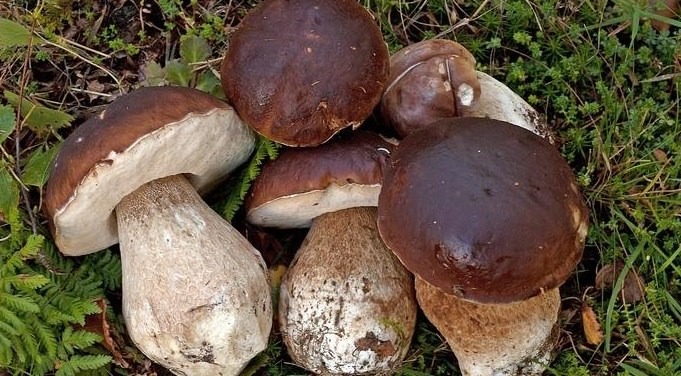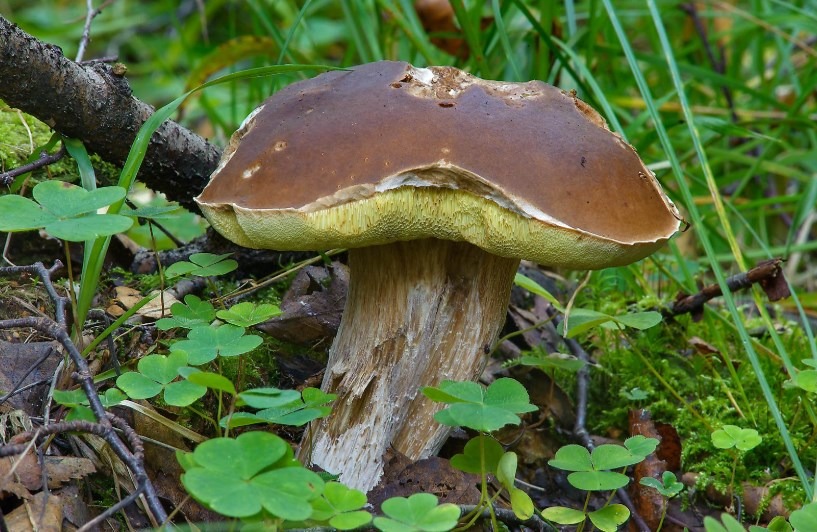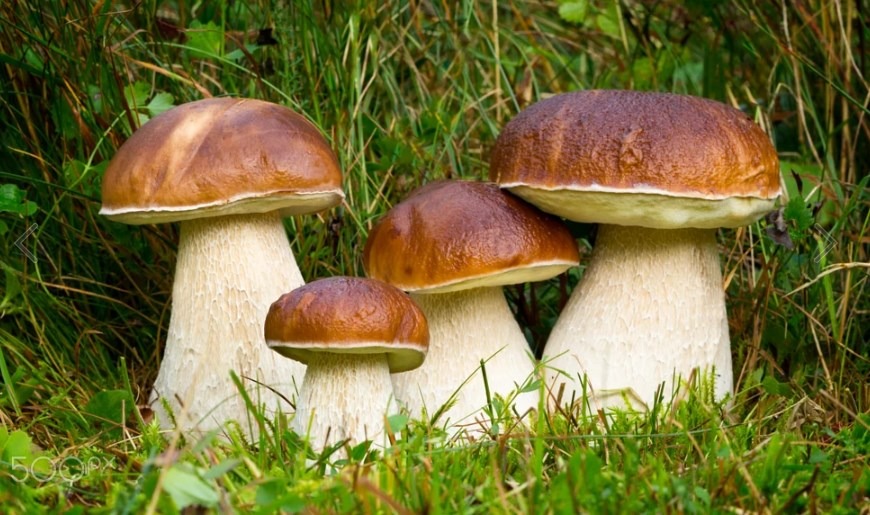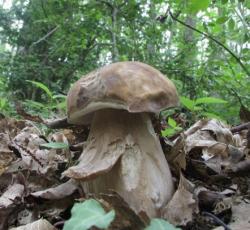The Boletus edulis is a species common throughout Italy and in all temperate zones of Europe and the world. In Italy it is known as the Porcini Mushroom. From a gastronomic and alimentary point of view, some of the boletus Mushrooms are one of the most esteemed species of mushrooms (perhaps the most esteemed), especially after drying. It grows under conifers and birches, oaks and beeches and its meat develops a very pleasant aroma.

Indice
Other names of Boletus edulis
As mentioned in the previous paragraph, the Boletus edulis is also known by the classic name of Porcini Mushroom. Other names commonly used in Italy are Brisa, boletus bulbosus , ceppatello, porcino d’autunno and boleto commestibile. The most common name in Italy is, however, that of porcini mushroom.
Description of the Boletus Edulis
Let’s talk now about the physical and morphological characteristics of the pig. Some say that it is called this way because it is highly appreciated by pigs. Others say it’s because young people look so much like chubby little pigs. The porcini mushroom was already well known in ancient times especially in the Roman period with the Latin name of “suillus”.
Cap
The cap of the boletus edulis has dimensions going from the 5 to the 20 cm (if the luck is there even 30 of diameter). The colour of the cap is variable and goes from the white to the cream, to the reddish-brown, up to the dark brown.
At first round and then more convex and flat, the cap of the porcine tends, gradually, to get up as the fungus develops. The surface remains smooth and slightly moist. The edge of the cap is irregular and the appearance is fleshy.
Below the cap in the lower part of the hymenium is composed of thin and very long tubules that never stick to the stipe. In the young fungus, they are white and, on the contrary, in the mature fungi, they become greenish and darker and darker.
At the beginning, with the young fungus, the pores are invisible or almost, however, with the maturation they become well visible.
Stipe
The sipe of the porcini mushroom is whitish but it can also have a hazelnut colour. The shape is stocky and robust. In the younger specimens it takes on a characteristic bulging shape which then becomes cylindrical in the more mature and elongated specimens. It measures from 5 to 20 cm in height.
Flesh
The meat of Porcini Mushrooms is consistent, with a good smell and a sweet taste. The colour is white and immutable. This means that even if you cut or cut it, the color remains white, unlike various species of mushrooms, even poisonous ones, whose color becomes olive.
The smell, which is already pleasant, becomes tasty and very accentuated with the drying of the fungus. The stipe is often covered in the upper part by a very thick reticulation of darker colour.

Habitat of Boletus edulis
The Boletus edulis is a symbiotic fungus that grows together and close to tall trees. It grows among broad-leaved trees but also in coniferous woods, among pines and firs or in woods of beeches and chestnuts, hornbeams, oaks and hazels. Boletus edulis are widespread in all temperate zones, especially in continental zones all over the world, or almost.
Due to the fact that the Boletus edulis is a symbiotic fungus, it is not possible to cultivate it artificially. We have talked about it specifically here: bales of Boletus edulis.
As for the share of spread of Boletus edulis is found from 300 to 1600 meters in general but can also be found at different altitudes if the environment and conditions are favorable and especially if there are suitable trees symbionts.
This delicious fungus, which usually appears in small families in a scattered order, mainly prefers areas with well-drained soil, where there have been no stagnations of water too long.
Growth periods of Boletus edulis
The growth period of Boletus edulis is both in spring and autumn. Especially in our regions it grows in autumn, but it can also be found in the middle of summer. In spring and at the end of summer it appears in damp and cool periods without periods with excessive hot or cold temperatures.

